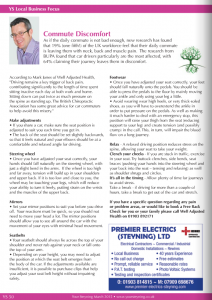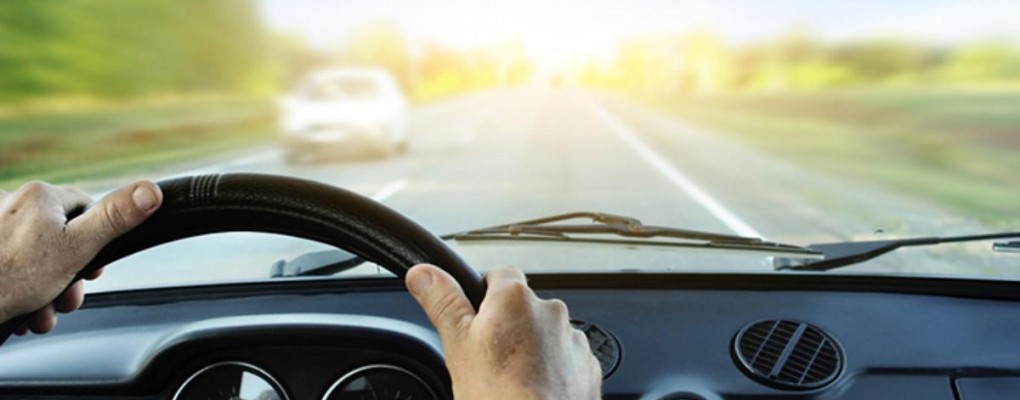 As if the daily commute is not bad enough, new research has found that 19% (one fifth!) of the UK workforce feel that their daily commute is leaving them with neck, back and muscle pain. The research from BUPA found that car drivers particularly are the most affected, with 64% claiming their journey leaves them in discomfort.
As if the daily commute is not bad enough, new research has found that 19% (one fifth!) of the UK workforce feel that their daily commute is leaving them with neck, back and muscle pain. The research from BUPA found that car drivers particularly are the most affected, with 64% claiming their journey leaves them in discomfort.
According to Mark Jones of Well Adjusted Health, “Driving remains a key trigger of back pain, contributing significantly to the length of time spent sitting inactive each day at both work and home. Sitting down can put twice as much pressure on the spine as standing up. The British Chiropractic Association has some great advice for car commuters to help avoid this misery.”
Make adjustments
- If you share a car, make sure the seat position is adjusted to suit you each time you get in.
- The back of the seat should be set slightly backwards, so that it feels natural and your elbows should be at a comfortable and relaxed angle for driving.
Steering wheel
- Once you have adjusted your seat correctly, your hands should fall naturally on the steering wheel, with just a slight bend in the arms. If the wheel is too high and far away, tension will build up in your shoulders and upper back. If it is too low and close to you, the wheel may be touching your legs, which will reduce your ability to turn it freely, putting strain on the wrists and the muscles of the upper back.
Mirrors
- Set your mirror positions to suit you before you drive off. Your reactions must be quick, so you should not need to move your head a lot. The mirror positions should allow you to see all around the car with the movement of your eyes with minimal head movement.
Seatbelts
- Your seatbelt should always lie across the top of your shoulder and never rub against your neck or fall onto the top of your arm.
- Depending on your height, you may need to adjust the position at which the seat belt emerges from the body of the car. If the adjustments available are insufficient, it is possible to purchase clips that help you adjust your seat belt height without impairing safety.
Footwear
- Once you have adjusted your seat correctly, your feet should fall naturally onto the pedals. You should be able to press the pedals to the floor by mainly moving your ankle and only using your leg a little.
- Avoid wearing wear high heels, or very thick-soled shoes, as you will have to overextend the ankle in order to put pressure on the pedals. As well as making it much harder to deal with an emergency stop, this position will raise your thigh from the seat (reducing support to your leg) and create tension (and possibly cramp) in the calf. This, in turn, will impair the blood flow on a long journey.
Relax – A relaxed driving position reduces stress on the spine, allowing your seat to take your weight.
Clench your cheeks – If you are stuck in traffic, exercise in your seat. Try buttock clenches, side bends, seat braces (pushing your hands into the steering wheel and your back into the seat – tensing and relaxing) as well as shoulder shrugs and circles.
It’s all in the timing – Allow plenty of time for journeys to avoid stress.
Take a break – if driving for more than a couple of hours, take a break to get out of the car and stretch.
Mark adds ‘Cyclists and runners are among those least likely to feel any back or joint pain, with only 6% and 5% respectively saying they do. This clearly demonstrates that incorporating some physical exercise into your day can support good bone, joint and muscle health!”
If you have a specific question regarding any pain or problem areas, or would like to book a Free Back Check for you or your family please call Well Adjusted Health on 01903 892171
Take your first step towards enjoying your life more
From the team at Well Adjusted Health
 Providing gentle chiropractic in West Sussex
Providing gentle chiropractic in West Sussex
including Ashington, Storrington, Steyning, Southwater, Horsham, Shoreham, Worthing and Billingshurst

